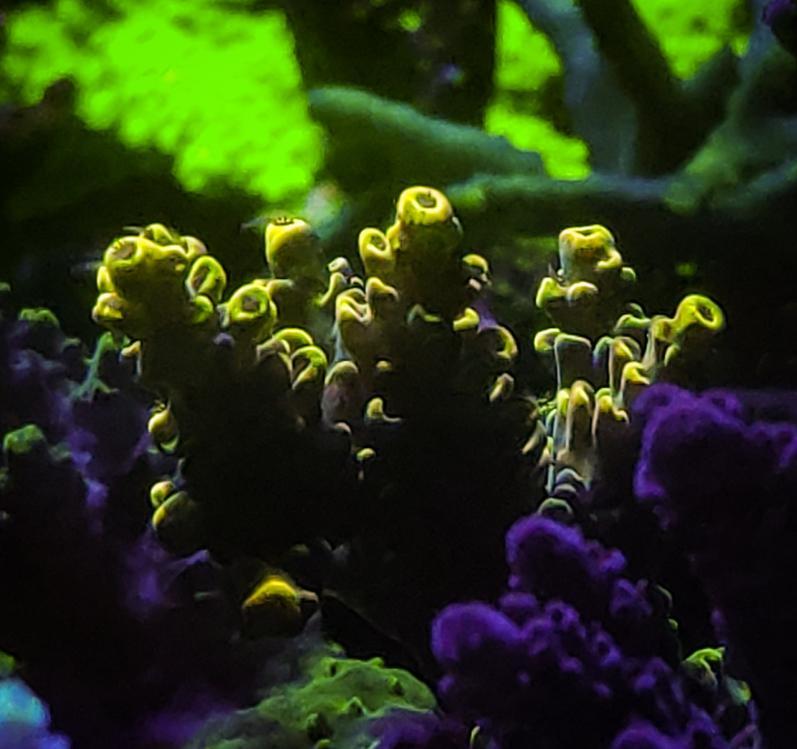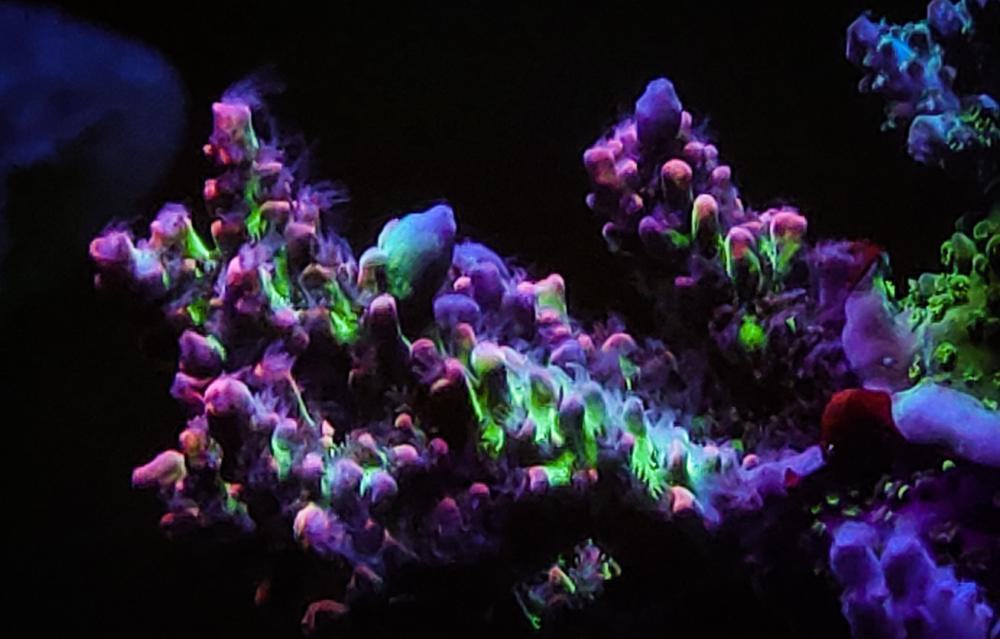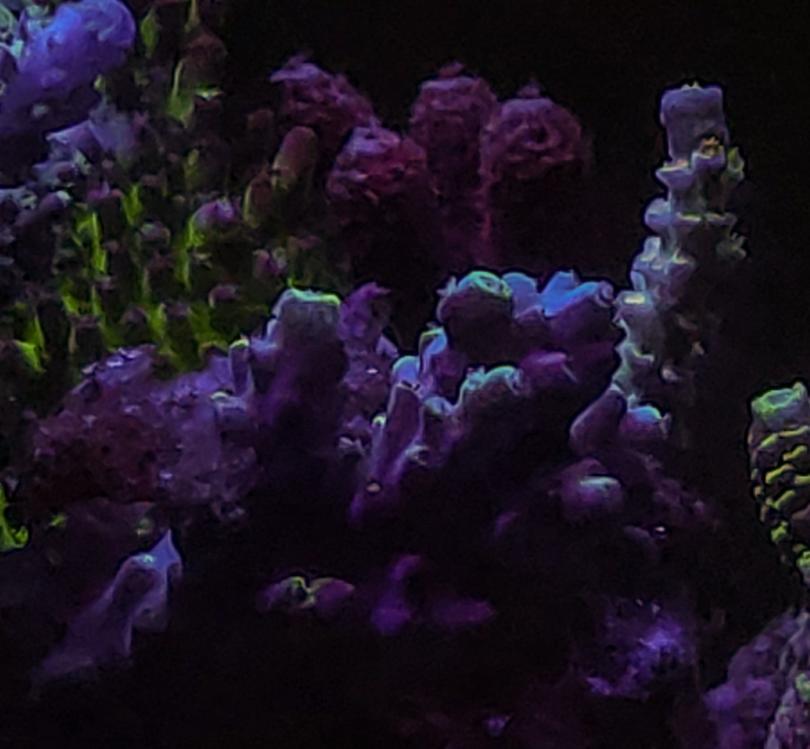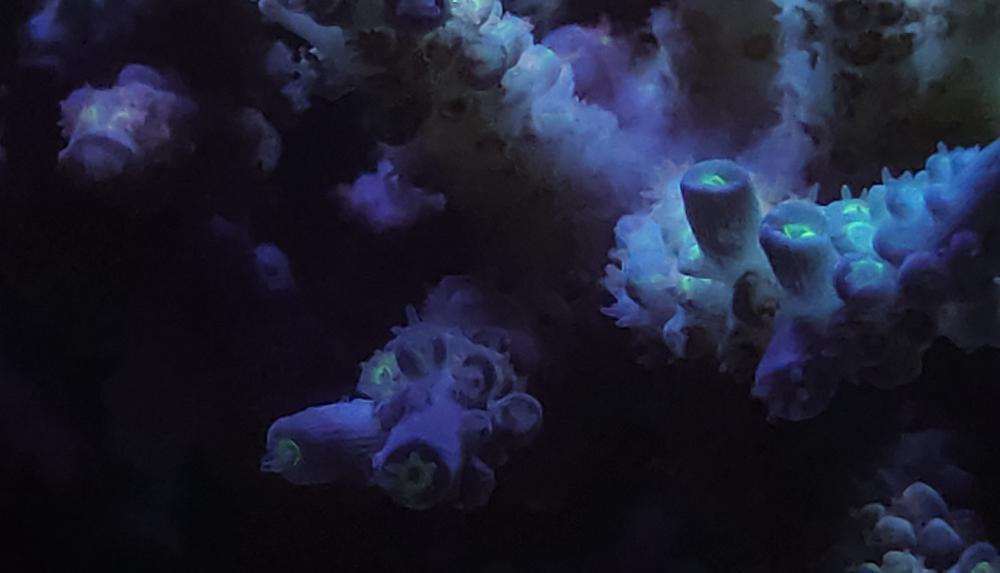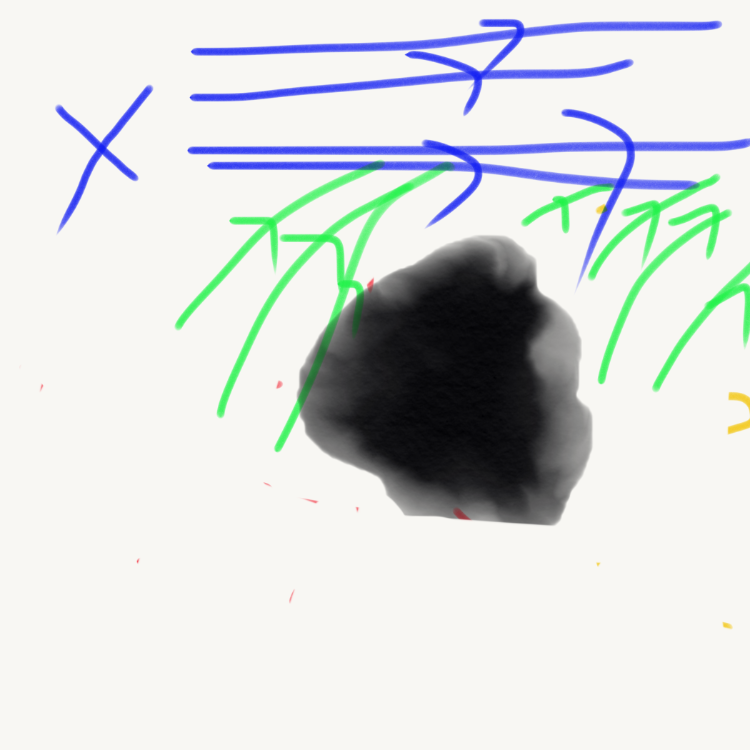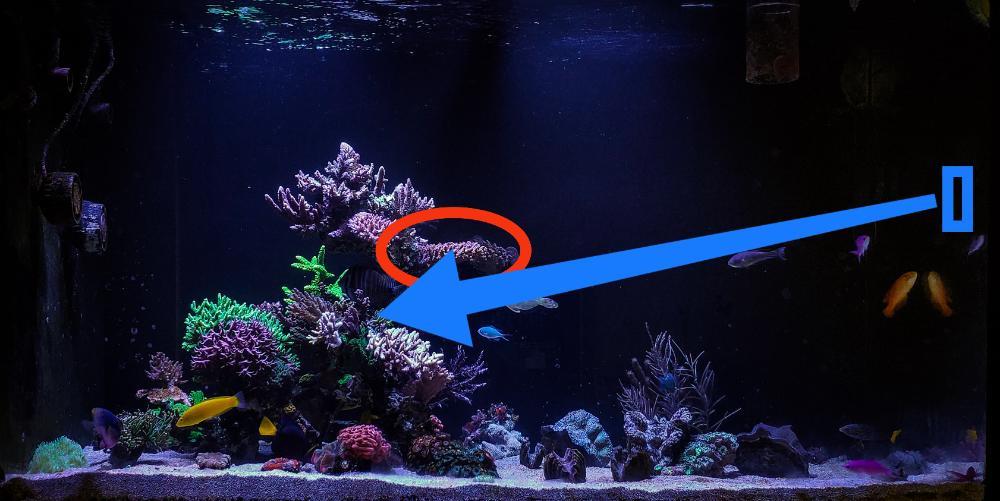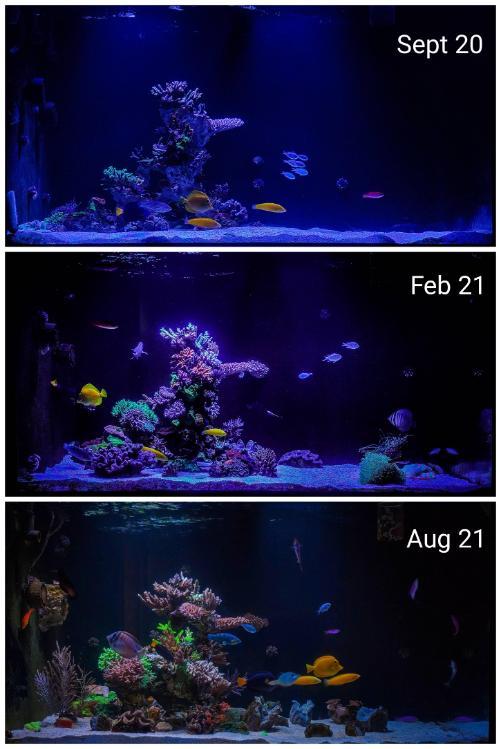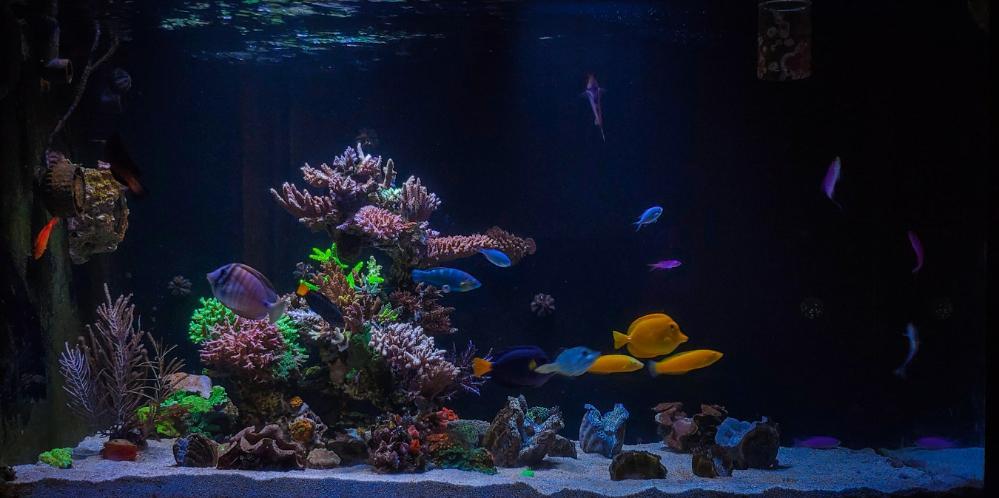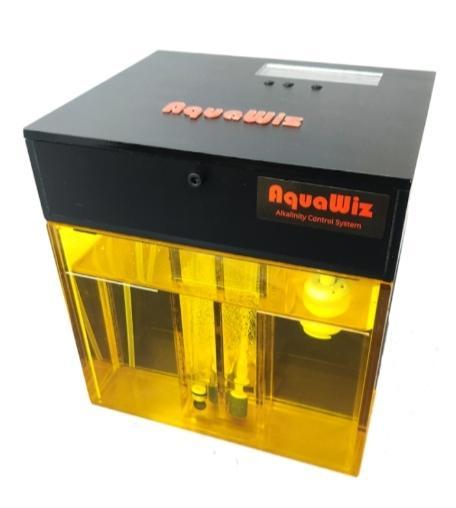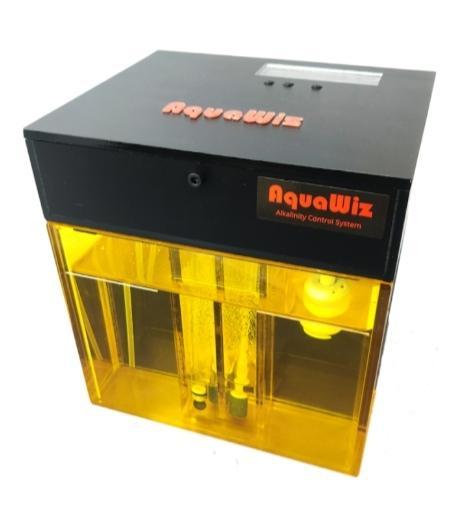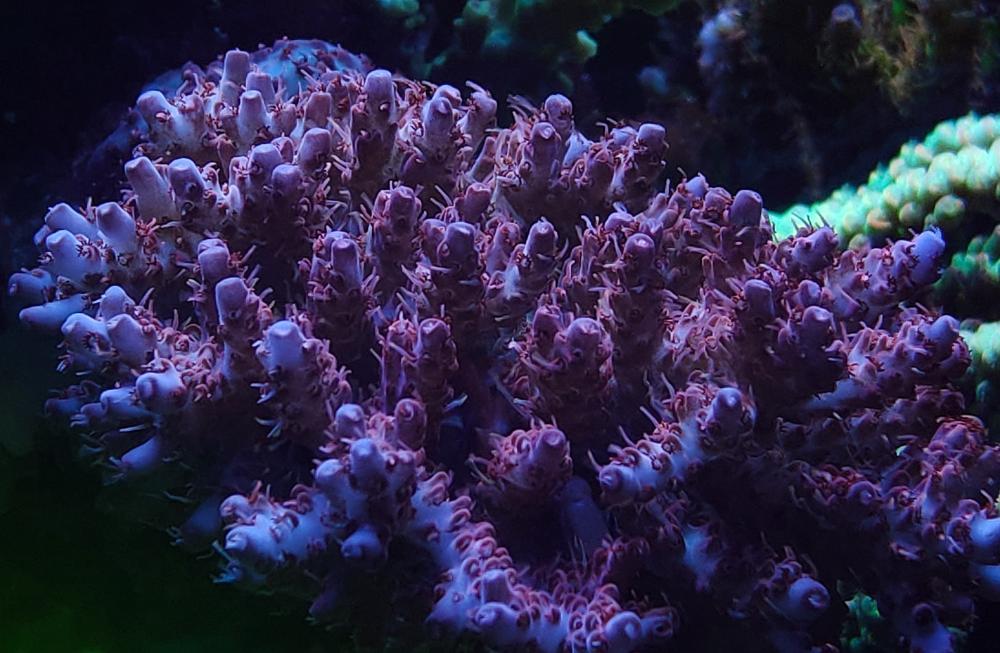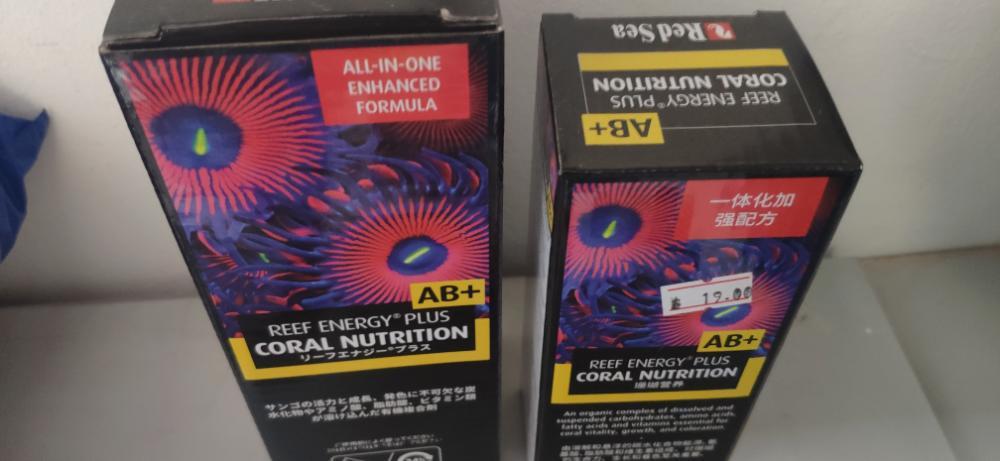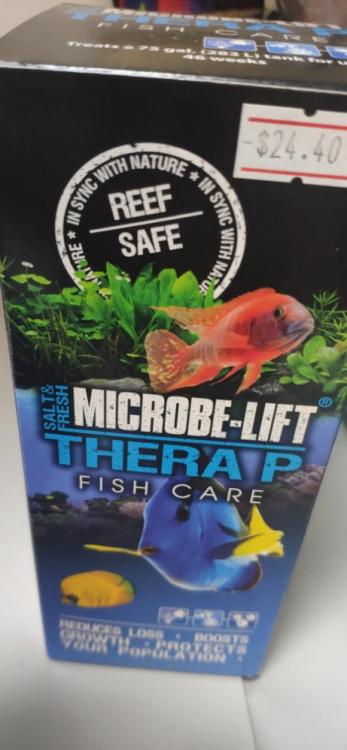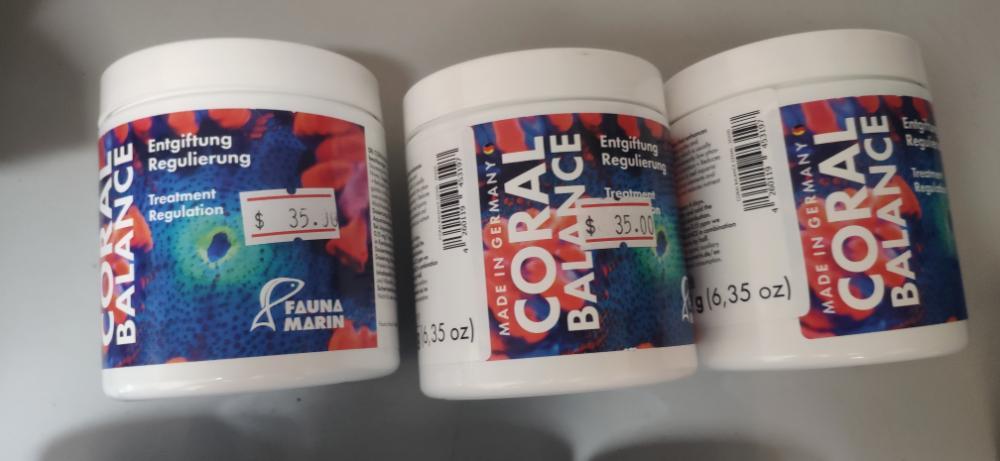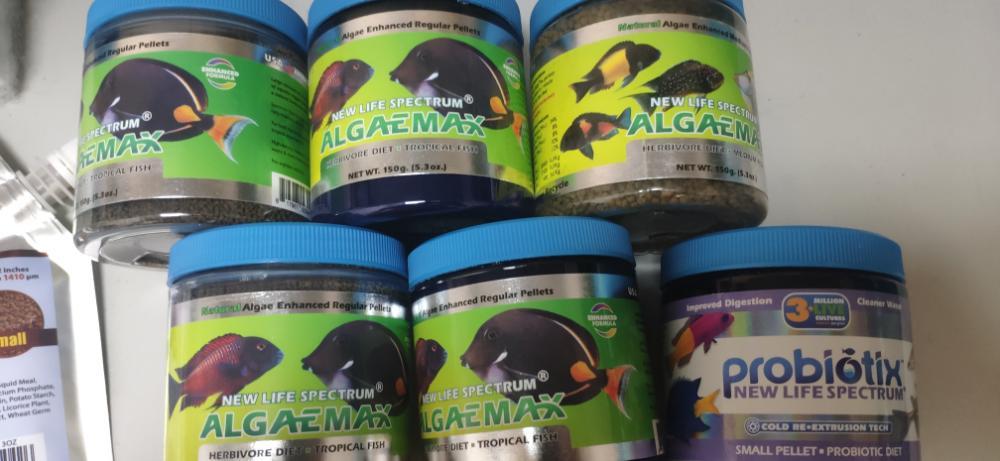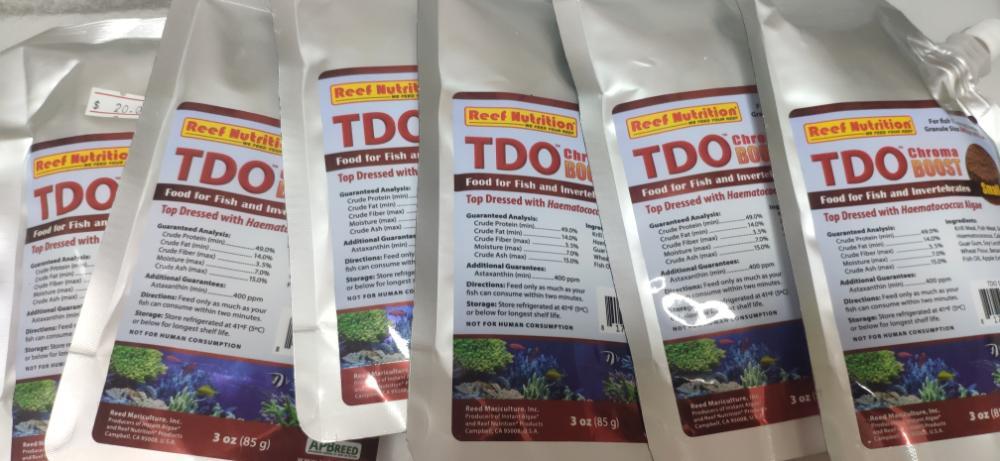-
Posts
304 -
Joined
-
Last visited
-
Days Won
15
Content Type
Profiles
Forums
Gallery
Everything posted by JiaEn
-
Mm.. Would UV breaks down organics in the aquarium? I doubt it will. Perhaps the low OLI reading (which is based on color of the water, right?) Is due to the reduction of microalgae and bacteria flocks in the water column?
-
Food for Thought Imagine you are a colony of super sun coral, sitting in the shade along some reef slope or a cave. Since you don't have any zooxanthelle, you have to actively capture food from the surrounding to stay alive. So what kind of food would you likely eat? Looking at the size of the mouth of these dendrophyllia, it's only natural to think that probably small pellet sized food is what they eat naturally, because they kind of fit right into the mount of the coral. Yet as I look closely at these animals, I realised that something doesn't add up. For a wild colony of dendrophyllia, how likely is it for each individual polyps to have access to large and slow food, on a regular basis? Nobody is target feeding these corals 365 days a year. Therefore I felt it is very unlikely that these NPS would demand large particles of food. Pico and Nanoplankton The ocean is awash with different planktons, but when it comes to size and availability, there is a lot of difference. Turns out that the smaller the size of the plankton, the more abundant they are(Darcy,2014). It is then much more sensible for all these sessile predators to go after the most abundant of preys - pico and nanoplankton. These consists of bacteioplanktons, dinoflagellate, diatoms and a variety of micro algae. The size of these particles ranges from 0.2-20 um (while in contrast, reef roid has a particle size of 150-300 um). Having looked around for some studies to confirm or disapprove my guess, I came across several papers. In one study(Leal, 2014), the author used molecular markers to test if coral species takes up microalgae. In another (Houlbrèque, 2004) the authors examine the importance of planktonic prey for corals. They were able to show that the corals do obtain significant organic carbon and proteins from these planktonic food. Implications? Finding the correct food source for corals (regardless of zooxanthelle) is an area for progress to be made. No doubt the commercially available coral supplements are getting better. But could there be some "holy grail" food that we can supply to our aquarium? In my opinion, while ground up plankton and krill may have a strong odour, and elicit feeding response, they may not provide the optimum size and nutrient profile for the corals. That's why I embark on a journey to search for better coral food. (Tbc)
-
Yay! But not full zeovit. It's a hybrid of zeovit and zeolight.
-
At this stage, I believe cyano/dino blooms not in the absence of nutrients but in the presence of nutrients not easily used by it's competitors (other algae, bacteria, coral etc). So while adding nutrients may help those competitors and potentially allow them to overwhelm cyano/dino, it does not directly address the surplus of dino/cyano feeding nutrients. Not to mention, partial breakdown of the food we feed can produce nutrients ideal for cyano/dino growth. That's why I feel promoting heterotrophic bacteria is very effective in preventing cyano/dino outbreak. These bacteria seems to consume same family of nutrients - dissolved organic compounds. If the aquarium does hot have competent population of heterotrphic bacteria, the weakness in the food web will always be exploited by cyano/dino. As for stirring of the sand bed.... That's literally and figuratively a can of worms. I'm all for cleaning sand bed as regular maintenance, but stirring it when there is an outbreak, imo, is too much of a gamble. In any case, if the goal is to aggresively breakdown organics to reduce nutrients for nuisance algae, I find the combination of zeozym, coral snow and activated carbon extremely effective.
-
Dealing with the Sand The sand bed has been a pain to keep clean. Manual blasting with turkey baster works well, but it's tough and a bit risky to clean around the clams. My lazy solution? Surround the clams with lps so that I don't need to clean those area anymore. I know this is not the ideal situation, but oh well, less work is better I guess. Let the Time be on Our Side At the end of the day. It takes time for a coral to establish itself, and show its full potential. So keeping the system stable for as long as possible is the key to good growth and good color. Some of my acro are recovering and gaining nice color. While some others are still work in progress. Good yellow tone on the pikachu acro. Strawberry Shortcake with blue tips, quite a unusual look. Rockstar acropora. This was a much abused, miserable frag from a colony which slowly declined to oblivion. I cut off this frag and glue it without much expectations. It looked exactly miserable for 6 months. Now, the yellow highlights started to return, slowly. This is a super pale tenuis. Quite a mystery this is. The colony is placed at the bottom 1//4 of the tank, so the amount of light shouldn't be overwhelming. However, the light side of the colony is snowy pale with light fluorescence color. Fortunately the polyp extension is still good. So I suppose they should be safe nutritionally. Again, only time will tell.
-
Flow Problem As the acropora grow, the flow starts to slow down significantly. The open channel I relied on to generate entrainment flow is no longer sufficient. The thing about coral induced flow change is that they do so slowly. As such, it often happen without the aquarist noticing, untill coral starts to be unhappy. I noticed my hyacinthus (red circle) starts to have less and less polyp extension, and started to see more detritus accumulated within it's branchlets. Certainly a sign of lack of flow. Solutions I have basically 3 options to rectify this. 1. Add an additional wavemaker on the left side, and hoping the added flow can pentrate the new growth 2. Install a gyre style flow on the opposite (right) side, to have a wide stream pushing to the left 3. Install a wavemaker on the right side, to target the weak zone directly. I end up with option 3. Installed a small jebao wavemaker (blue) and pushes water along the arrow. It's in the shade, so fairly invisible from the front. The targeted flow show be able to provide for a lot more growth on the main structure. Problem of the Solution The new wavemaker produces two new challenges. Firstly, the enhanced flow poses some challenges for the clams. Their mantles may over flex and become stressed. I moved some corals around to divert the flow over it. Another challenge is that now I have to have a ugly magnet on the side viewing panel. I will do something about it soon.
-
Hey! Great looking tank I notice your calcium level is also on the low side. Probably indicating growth from your corals and clams. Happy problem. As for phosphate, you may want to look at why the level is elevared in the first place. Relying on GFO for phosphate control can get expensive if the upstream problem is significant.
-
Perhaps you can take a look at these https://www.sciencedirect.com/science/article/abs/pii/S0025326X05001062 https://www.sciencedirect.com/science/article/abs/pii/S1568988317301014 https://www.ncbi.nlm.nih.gov/pmc/articles/PMC3849724/ It's important to note that nitrate and phosphate are not the only available (or even preferred) type of N and P in the aquarium. Also, even if we test zero using our test kits, it merely means it's below the limit of detection of the kit.
-
Dino and Cyano Finger crossed, I don't have an outbreak now. However I do have several encounters with out of control dino or cyano bloom, and had overcome them successfully. I would like to share my thoughts, and debunk some myths about cyanobacteria and dinoflagellate. 1. My Tank Don't Have Cyano/Dino Unfortunately, or fortunately, a population of cyano, and dino, are always there in our aquarium. The number maybe very low, and invisible to our eyes, but they are there. As certain as their are bacteria in your biofilters and rocks, the cyano and dino are there on the rocks, sand bed, and glass. The only reason stopping them from growing out of control is the rest of the bacteria, algae and corals, competing (successfuly) against them, keeping them in check. 2. Cyano and Dino Appears when Nitrate and Phosphate is Zero This is one of the most repeated statements about cyano and dino. However, I think this does not represent the full picture. Cyano and Dino are living organisms which requires nitrogen and phosphorus elements to grow and reproduce, just like any other organism does. So if one start to believe that the lack of nutrients leads to proliferation of these "pests", one is mistaken. While cyano is able to fix nitrogen from dissolved gas, all of them requires phosphorus from their enviroment. Therefore. If there is no phosphus available, neither cyano or dino can strive. Then how do we reconcile the fact that many reefers observe cyano or dino outbreak, when their nitrate and phosphate levels are zero? Look back at my previous paragraph, these organism needs nitrogen and phosphorus, but not necessarily in the form of nitrate and phosphate. Our test kits cannot detect other forms of nitrogen, nor organic phosphates. Therefore, conceivably the aquarium can at the same time be NP rich, yet detects 0 on the different test kits. What can possibly lead to this situation? One of the possibility lies in disruption of food chain, where heterotrophic bacteria population is suppressed. In the absence of these, organic compounds remain in the aquarium, the inorganic salts remain low, and many nutrients are available, and preferred by cyano and dino. 3. Medication Many reefers recieve the advise to medicate when faced with blooms. Many discussions have taken place regarding both the efficacy and safety of various treatments. While I believe many treatments can effectively and safely suppress the cyano or even dino, I am against medicating against these organisms. The reason is simple. These organisms thrives because of available nutrients in the aquarium. When they grow, they actually takes up these nutrients and fix them in their bio mass. If we were to kill them through medication, these excess nutrients are onces again released into the water column. It may solve the symptoms of algae bloom, but it does little to address the source of the problem. I advocate physical removal of the offensive algae through siphoning, into a filter sock in the sump. This way, we have the confidence that whatever offending nutrients is removed from the system for good.
-
Dubious Food Yup. Feeding dubious looking brown liquid to precious reef tank is.... not for the faint hearted. Understand the science behind it gives me some confidence. But it's one thing to talk about science, it's another to translate the confidence into action. Never try, never know. The feeding response is quite good. So... See how it goes. Untitled - Sequence 01 2.mp4
-

Red Sea Peninsula 500! DIY projects galore
JiaEn replied to f16driver's topic in Members Tank & Specs
Great write up on aqua scape! I totally agree with you that the scape should provide ample space for coral to grow, and show case the corals as much as possible. I also a firm believer of designing the scape based on how it will look after the corals have grown. My thought on the shading though, is to actually purposefully create areas of shades. So that less light tolerant corals can thrive as well in the same tank. Another lesson I learnt is that we often underestimate how big corals can grow, and generally leave too little space during planning. Keep the updates coming! -
Thumbs up for proper pH management! Using CO2 scrubber in recirculation mode can significantly counter the high CO2 level in the rooms, while significantly reduce the media consumption. Time to double up the reactor and push the pH even higher
-

Fishtank water is very foamy after Chemiclean treatment
JiaEn replied to Validator's topic in General Reefkeeping_
It is good to consider this. If chemiclean works. Then the cyano is killed. The cells breakdown and release all kind of content inside. Some of those can cause the skimmer to foam aggressively. Just like @peedeers said, removing these unwanted substance is as important, if not more important than getting rid of the cyano in the first place. Consider the alternative where all these remains in the aquarium, it's a matter of time before cyano, or other algae comes back again. Letting you skimmer do it's job, is one of the easiest way to accomplish this. Maybe u can adjust to skim drier, maybe you can use some fresh activated carbon to help out and absorb some compounds. Or even consider doing a water change to dilute the pollutants. Also do take note, GAC is not meant to last forever. They can be depleted within weeks or days in highly polluted tanks. -
-
When (Not) to Buy an Alk Monitor Alkaninity monitor and controllers has been a step forward in reef keeping. Not only do we keep tabs on alkalinity on a continued basis, it also allows us to do so with much improved accuracy and precision (then again, we don't need 0.01dkh accuracy anyways). For an alkalinity controller, such as the Aquawiz, or Alkatronics, it can carry out compensation dosing to keep the alkalinity level of the aquarium within a narrow range, resulting in a very stable environment. Therefore without a doubt, alkalinity controllers can be a valuable assets in reefing keeping. The question some reefers may ask is, should I get one? In my opinion, this depends on where the reefer is, in terms of his reefing journey. Allow me to share my views. Alkalinity Management Among all the water parameters a reefer having to manage. Alkalinity is one of the easiest to master. Short of some massive accidents, alkalinity consumption is relatively stable; at the same time, alkalinity supplement is straight forward, and the result of supplement is generally immediately visible. Therefore I feel that knowing how to manage alkalinity, and success in keeping alkalinity stable through correct level of supplement is both achievable and important for a reefer. Without the understanding to manage alkalinity well, it will be an uphill battle to manage nitrate, phosphate and a plethora of parameters critical for reefing success. For reefers who have yet to "learn the trade" I advocate learning to manage alkalinity by themselves first, after they succeed, then can start to consider automation. It's Good to Have One If we are not looking for complete transfer of responsibility in alkalinity management, and instead want to be more involved in finessing the dosing regime, an alkalinity monitor is a formidable asset. Firstly it confirms a few critical information for me. If the monitor shows stable level of kH, then I have good confidence that both the dosing, and my corals, are doing well. If my dosing pump messed up, it will reflect as kH fluctuations. If my coral is unhappy and not calcifying, it will also show up as kH fluctuations. What if both are messed up and the effects cancels out? Well. Since both issues are something unlikely to happen, having them happen at the same time is even more unlikely. Thus I am fairly confident to accept alkalinity stability as indicator for these aspect of my aquarium. Secondly, it provide me with an hourly rate of the alkalinity consumption in the aquarium. Which part during the light cycle does the system consume most alkalinity? Is the system limited nutritionally? If I feed the corals 30mins before peak calcification, will the calcification rate goes even higher? Data gives us insights, precise and specific data gives us more insights. From here, then we can draw meaningful conclusions and make sound choices. This is why I bought an alkalinity monitor.
-
-
AquaWiz So how exactly does this AquaWiz work? Well, the device starts by filling the two sample tubes with water. One of them form the aquarium, while the other from the internal reservoir. When the samples are in place, The airstone starts to aerate both samples, for a long time. At the end of the aeration, both samples will achieve equilibrium with the environment, and have the same CO2 concentration. The sample preparation is complete. The pH probe takes the measurement of one sample, and temporarily stored in the device. Then, the dosing pump empties the tube, and transfer the other sample into it. The pH of the second sample is measured with the same probe. Since the two samples have the same temperature and CO2 concentration, we (or the device) can calculate the kH of the tank water based on the known kH of water in the reservoir. When is done. The water from the aquarium is returned, and the device updates the kH reading to a web server. This may sound complicated. However, in actual use, the device just do all these on its own, with little input from the user. Accuracy As with all test methods, the accuracy of the test depends heavily on calibration. In this case, the measured kH value of water in the reservoir. When we measure the kH values for calibration using, say, salifert test kits, the accuracy is limited (0.3 dkh per step). Therefore, even if the device measures down to 0.05 dkH, I would not pay much attention to the last digit. If a more accurate kH kit is used for calibration, then the afforded accuracy will be more meaningful. Having said that, AquaWiz produce consistent results, which agrees with my random sample tests with salifert. More than enough for hobbyist use. Pros After 2 month of hands on with AquaWiz, allow me to share some pros and cons of this device. The advantage of thr AquaWiz is very obvious. There is no reagent required, and no wastage of aquarium water. In a long run, this will translate to substantial cost savings, especially if the test is done hourly. Secondly, the nature of measurements place little demand on the accuracy of the dosing pumps, as well as the pH probe. This translate to less calibrations, and potential cheaper replacement of parts. Third, the device has a kH-pH output, it can easily be integrated into modern aquarium controllers, such as the apex system. The device also comes with an additional dosing pump, used for compensation dosing based on measurements. Cons Nothing is perfect though, and the device has a few quirks. Firstly, the use of air pump translates to vibratory noise. Putting it in the sump cabinet reduce the noise somewhat. However, if you are used to dead silent aquariums, the noise is definitely quite audible. Secondly, the device does not have a "test now" function. In fact, such a function is not meaningful for AquaWiz because it takes 30 mins or so to complete the test - much longer than doing a simple salifert test. In a way, the device is designed for regualr monitoring, rather than on-demand testing. Thirdly, AquaWiz does not have an on-board storage of past data. All results are kept for only an hour in the device. The data is uploaded to the web server and stored permanently. It's also able to output the kH value to any pH monitor. The lack of onboard storage maybe a deal breaker for some, especially if the wifi coverage in the sump is poor. That's it. My take on AquaWiz. I'll be using the data I obtain from it for the next few posts.
-
Kh Measurements - Alternative I end up getting a kH monitor. The device does not use reagents, does not produce waste liquid, does not require frequent calibrations. Too good to be true? In most cases, it would be. But thanks to good science and clever engineering, there is a solid alternative for kH monitoring. kH measurements (Part II) Other than titration method, there is another way for us to determine the carbonate hardness of the aquarium. For a carbonate buffer, such as seawater, the kH, CO2 concentration and pH are correlated. This means, if we know the pH of the aquarium, as well as the concentration of CO2 in the water, we can reliably calculate the kH of the water. You can take a glance at this article. Such measurements is not without its challenges. Firstly, in order for the kH calculations to be accutate, the pH measurements must be very accurate and precise. This requires properly calibrated pH probes which is accurate to 0.01 pH. Probes which can do this with consistency are generally very expensive. Not to mention frequent calibration is needed. Secondly, measuring of carbon dioxide concentration in water is expensive and inaccurate. Therefore if we want to measure the kH in this way, we have to solve two expensive problems: accurate measurement of absolute pH and CO2 concentration. Engineering to the Rescue Fortunately. There are ways to bypass these costly problems. If we can't measure the CO2 concentration in the water, can we adjust the sample to a known value? Turns out we can. By bubbling the sample water, we can make the CO2 level in the water to be the same as the air around it. Measuring CO2 concentration of air is easy and cheap. This, however, means we still need to have an extremely accurate pH probe, as well as a (cheap) meter to measure CO2 level. Again, engineering to the rescue. An Elegant Solution If we have two samples of water, at the same temperature, same CO2 concentration. Then the difference in kH is only affected by the difference of the pH of the liquids. And if we bubble two liquids with the same air. They will have the same CO2 concentration. If we use the same pH probe to measure the pH of both solutions, then the difference in pH can be measured very accuratly. [ for example, two liquids at pH of 8.01 and 8.03 respectively. The difference in pH is 0.02. If a pH probe is not well calibrated, it may read 7.99 and 8.01. The difference is still the same] This neat trick completely bypass the need to accurately measure any CO2 level, or having to measure the absolute pH. Oh wait. There is more icing on the cake. Since nothing (except air) is added into the sample, the water can be return unchanged to the aquarium. In addition, since it's not based on titration, the sample volume does not matter at all, which means there is no need to calibrate the sample pumps at all. All in all, in my opinion, too good but true. AquaWiz The device is AquaWiz. I have been using it for more than 2 month. It runs very well for me. I'll write more about it in the next post.
-
Measuring KH Since kH plays so many critical roles in the reef tank, it's no wonder that most reefers keeps a close watch at the kH level of their aquarium. For the longest time, kh are monitored across a relatively long period of time - we monitor the kH level of the reef aquarium every (few) day, and confirm that the level of supplement is in line with the consumption. Hobbyist titration kits are easy to use, and reasonably accurate for our needs. In recent year, however, automatic testing of kH becomes much more mainstream. With the likes of alkatronic, kH keeper, kH director, etc., modern reefers have many options to take a closer look at the kH of their aquarium. It's within the reach of hobbyist reefers to keep track of the kH every hour, and automate dosing process to keep the kH within very close tolerance. It's not a hard requirement for reefing. Many aquariums are run well without any KH monitoring. However, I do appreciate such timely data, especially when adding corals and clams to the aquarium. When coral or clams are added, they need time to adapt to the environment, before encrusting and growing. A close monitoring of kH level allows us to know when to increase the supplement to cater to the needs of these new animals. That's why I had been considering a kH monitoring device for my aquarium. Automatic Titrator Vast majority of kH monitor works similarly to our basic kH test kits. A dosing pump delivers a volume of aquarium water into the test vessel. Then, a standard acid is added slowly to the test vessel, while the pH is monitored using a probe. The volume of standard acid used to drop pH lower than the set point allows us to determine the kH of the solution. The process is straight forward, and the accuracy is high. However, the cost of achieving this accuracy is the large amount of aquarium water needed to conduct a test. If we were to conduct a test every hour, and each test use 50ml of aquarium water. We are looking at 1.2L of water used every day. This is a big hurdle for me, especially because I do not do regular water change. Another challenge presented by these type of devices is that the pH probe, and the dosing pumps needs to be well calibrated. Any bubbles in the dosing lines could affect the measurements. That's why I held on for a long time before committing to a device. At the end, it wasn't a automatic titrator.
-
Just realised the TDO pellets are recently expired I suppose they are still good to use. If you want one for free, just let me know.
-
It means if you were to only look at nitrate, your phosphate will bring about a bigger problem
-
Finally tidy up the store room today. I would like to sell some dry goods which I no longer need. 1. Redsea AB+ 500ml $25 250ml $15 2. TDO pellets I have 6 new packets of small pellets. $15 each. 3. Newlife Spectrum pellets Algaemax $15 (I have 5) Probiotix $25 4. Coral Balance $30 each 5. Microbe lift TheraP $15 Price is firm. Strictly self collect at CCK. Please PM if you are interested. Thank you for your time.
-
If there isn't much export, it's natural nitrate and phosphate will rise. How do you know there is good export? From collecting a lot of dark skimmates, or from algae growth in the refugium/scrubber Dosing bacteria can speed up the process, but ultimately, the nutrients must leave your system somehow.
-
You probably need calcium and magnesium test kits.
-
Do you do anything to bring down nutrients? Water change? Algae refugium? Carbon dosing? I think you should monitor your phosphate as well. It's as important, if not more important, than nitrate.


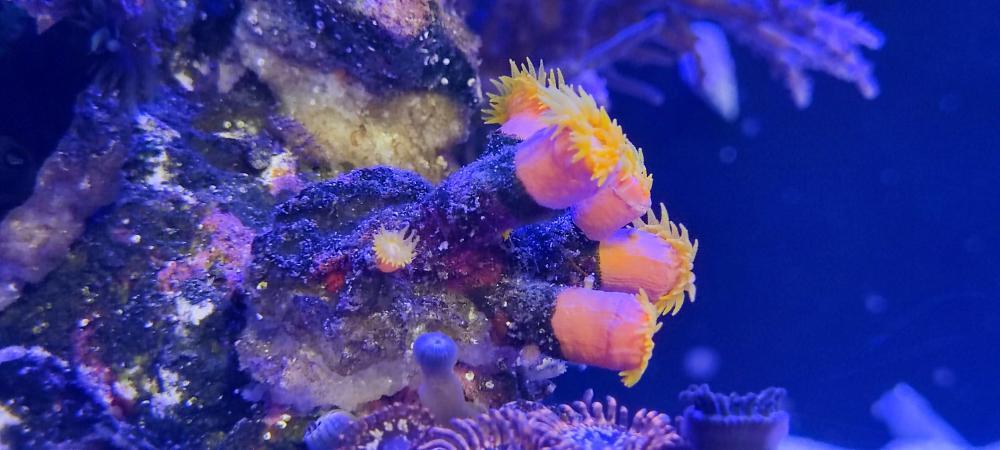
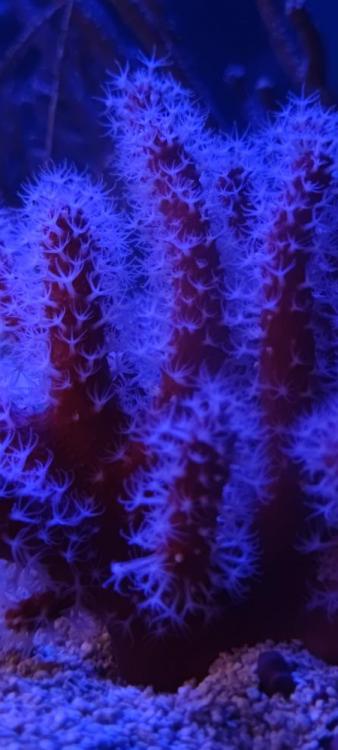
.jpg.69b23cfdc61c09d8defb33a7cece4539.jpg)
